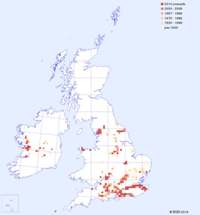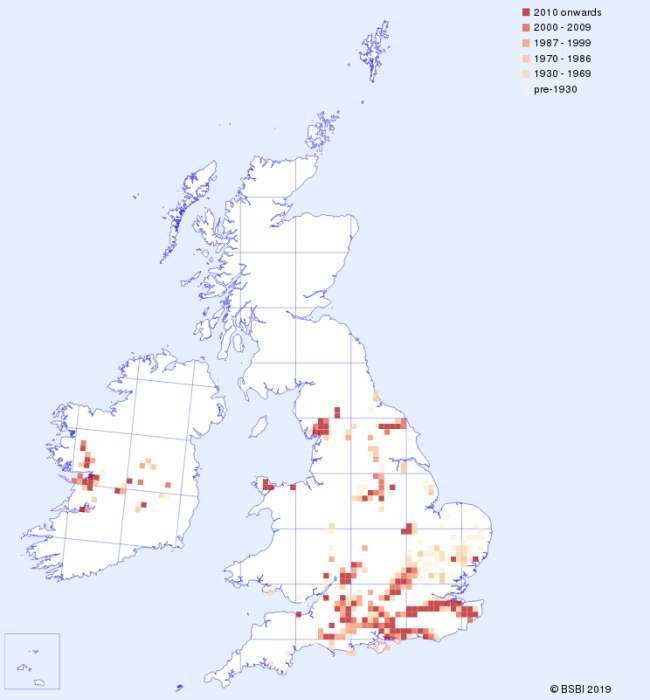Although less well-known due to its rarity than the Bee Orchid Ophrys apifera, the Fly Orchid flower is the most demonstrative of Ophrys species' ability to mimic the appearance of insects and hence to attract pollinators. Like many of our orchids, Ophrys insectifera populations are in decline due to loss of habitat, and in Britain it is on the Red List of threatened orchids and classified as Vulnerable. The plants are tall and slender with drab flowers making them difficult to spot; however, once seen they cannot fail to fascinate the observer of their tiny fly-like flowers. Although Ophrys insectifera is still relatively widespread in England, where its range extends from Cumbria southwards, it is highly localised in various lime-rich habitats. This orchid is also found in central and western Ireland. In Wales Ophrys insectifera is well known from the fenlands in Anglesey. Fly Orchids flower from late April to the end of June. This orchis species is confined to Europe, but it has a huge range extending from Finland and Russia in the north to Spain in the south.
| Distribution Map | Key Features | |
 |
Records for the Fly Orchid from BSBI are shown on the map with most recent in front. (Hover the mouse over the small map to expand it.) |
Plant: 15-60cm. |
Image Gallery for Fly Orchid Ophrys insectifera
| Pollination | Taxonomy & Hybrids |
These orchids are pollinated by male digger wasps that are attracted by the shape and texture of the flower and also by the pheromones which they emit. After landing on the flower, the insect attempts to copulate with it - so-called pseudocopulation - and during this process the pollen-bearing pollinia attach to the head or back of the insect. Pollination rates are low, seldom rising beyond 10 percent. |
The Fly Orchid belongs to the Ophrys genus. Its Latin name derives from the Latin words 'insecta' and 'fero' meaning 'insect-bearing'. |
Articles about Fly Orchid in JHOS
Mike Gasson (2013) Pollination in the Fly Orchid. JHOS 10: 60-66
